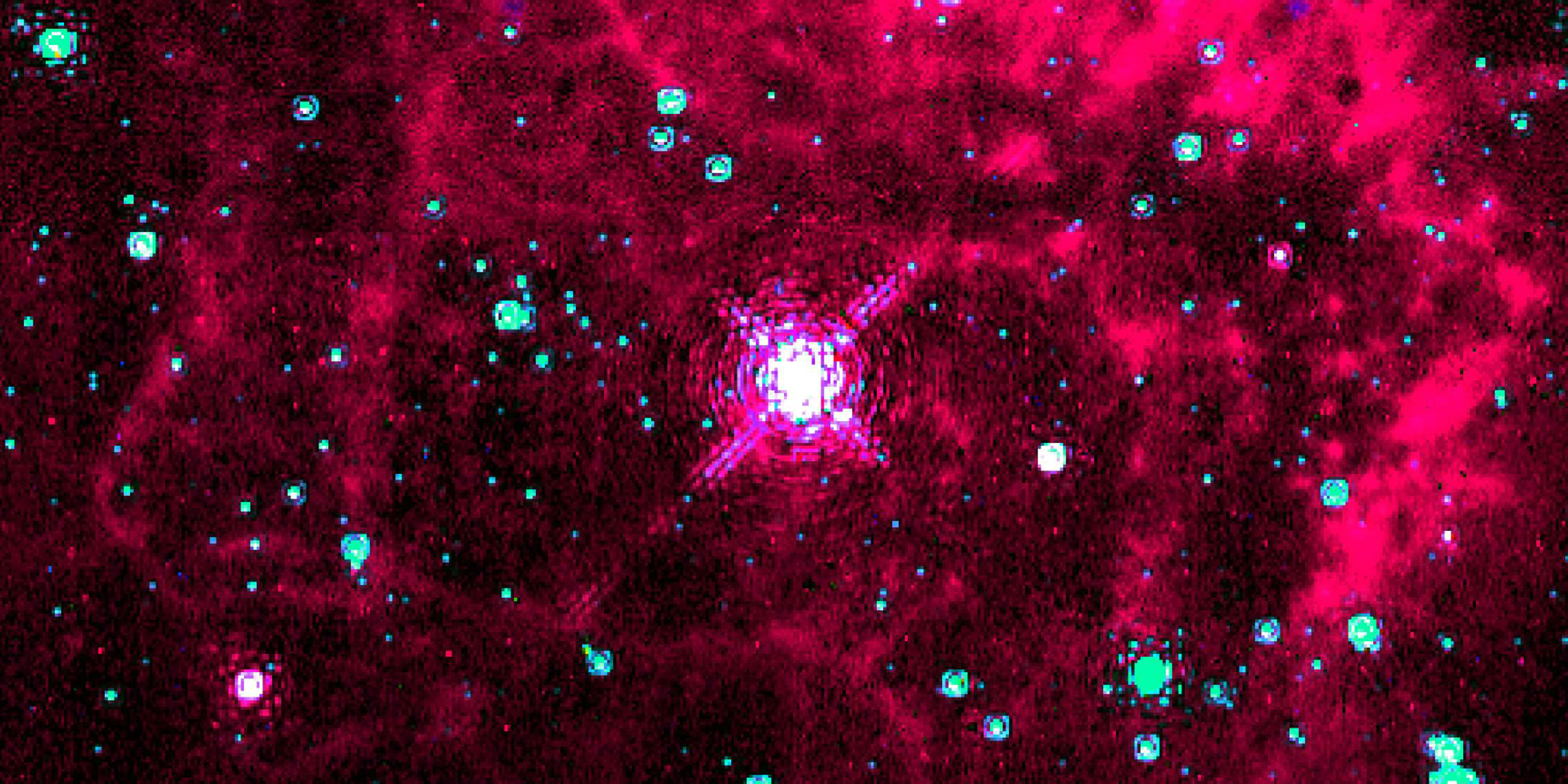Originally published 27 October 1997
There is a new king of the hill.
The Hubble Space Telescope appears to have confirmed the existence of the most luminous star ever observed, a gas-shrouded monster near the center of the Milky Way Galaxy that is 10 million times brighter than the sun.
The star is buried in a cloud known as the Pistol Nebula, for its shape. The star may have created the nebula, by blowing off sheets of its own substance. In any case, the “Pistol Star” makes good press, both for its name and because of our all-American fascination with anything that qualifies as biggest and most powerful.
However, the press reports should carry a disclaimer: “Not well understood.”
For one thing, the star is so far away, 25,000 light-years, and buried so deeply in its nebula that it cannot be seen in visible light. It was detected only by the infrared radiation that it emits — radiation that penetrates the clouds of gas that stand between us and the star.
Furthermore, the image seen on the Hubble photograph may represent the radiation of more than one star.
Finally, anything that happens near the center of the galaxy is not as well understood as events in our own neighborhood, two-thirds of the way out towards the edge. The centers of galaxies are venues for lots of mysterious goings-on.
Still, the Pistol Star takes possession of our imaginations. Here is a star, if it is a single star, that is born with tremors of violence, blazes briefly as biggest and brightest, and will die explosively. In short, the Pistol Star is a celebrity among the trillion stars of the Milky Way Galaxy, and that alone attracts our attention. It stretches our conception of the possible.
Not so long ago the most luminous known star was S Doradus, in the Large Magellanic Cloud, a small companion galaxy of the Milky Way. S Doradus is a white-hot giant, nearly a million times brighter than the Sun, but it too is “not well understood” and may not be a single star.
Among familiar stars, the brightest are Deneb, the tail star of Cygnus the Swan, and Rigel, the forward foot of Orion. These stars are surely what we make of them: single, hot supergiant stars, 60,000 times more luminous than the sun. They are also 15 times closer than the Pistol Star.
Of “well understood” stars, Deneb and Rigel hold the honors as kings of the hill.
And it is a hill. A census of stars according to their intrinsic brightness (as opposed to their apparent brightness, which depends upon their distance from us) would reveal a pyramid of types.
A look at the stars in our immediate neighborhood illustrates the pattern.
Within 20 light-years of Earth there are about 100 known stars. Of these, nearly 70 are tiny red dwarf stars, much less bright than the sun, barely hot enough to ignite the fires of nuclear fusion that blaze at a star’s core. These stars are so faint that they are not visible to the naked eye, even though they are among our closest neighbors.
Our 20-light-year neighborhood includes about 15 orange stars, hotter and bigger than the red dwarfs but not as hot or bright as the Sun.
There are six yellow stars, including the Sun, with surface temperatures of about 6,000 degrees Celsius.
Only three stars in the solar neighborhood are brighter than the sun: Procyon in Canis Minor, Altair in Aquila the Eagle, and Sirius in Canis Major. Sirius, a white-hot star, is the big boy on the block. The sun ranks 8th from the top of the pyramid.
A larger neighborhood, say 2,000 light-years in radius, would show the same pyramidal distribution, but with a few blue-white supergiants sitting near the top, 2,000 times brighter than Sirius, including Deneb, Rigel and the stars of Orion’s belt.
Now, if the Hubble image has been interpreted correctly, we have a new capstone for the galactic pyramid, bigger and brighter than any star yet observed in the prime of its life.
The capstone stars pay a price for their dominance. They come and go quickly.
The red dwarfs at the bottom of the pyramid burn their hydrogen fuel so slowly they live for hundreds of billions of years. In fact, because the universe is only about 15 billion years old, every red dwarf star that was ever born is still with us.
Yellow stars like the sun live for about 10 billion years. Because the sun is less than 5 billion years old, we have nothing to worry about for another 5 billion years.
But the biggest stars burn fast and violently. The Pistol Star, if it is a single star, is only a few million years old, and should blow itself to smithereens as a supernova within another few million years — a spectacular end to its brief reign as king of the hill.



